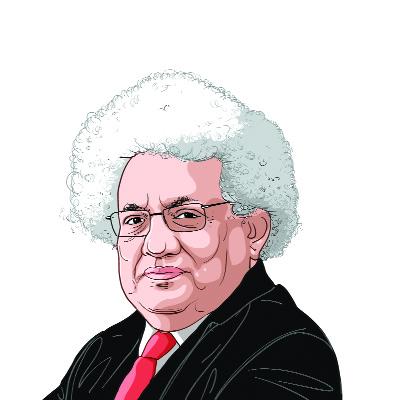Opinion Losing the lead
Wen Jiabao was in London last week and he scolded the British Prime Minister,saying he should not lecture his guest on human rights.
Wen Jiabao was in London last week and he scolded the British Prime Minister,saying he should not lecture his guest on human rights. But then David Cameron was a supplicant for trade and investment and had little choice but to listen. China has sold a high speed train system to UK. The one company making trains in UK is about to close its doors. The symmetry is awesome. The oldest railway country has shut shop and Middle Earth has taken over.
Why can China make high speed trains and not India? Why is Indias railway system such a byword for filth and overcrowding,slow trains dangerous platforms etc.? When I used to go by train in India in the Fifties,travelling by trains was a pleasure to look forward to. More recently,the few journeys I have taken have been horrible.
The difference I guess is in the quality of political governance. China like India has public ownership. But India treats its Railway Ministry as a prize for a coalition partner to use it as a base for patronising the region from where the minister comes. There is a steady diet of populism by cheapening the fares but no attempt to see whether the passengers would prefer decent services for a slightly higher fare. India has the oldest railway system in Asia,but it has lost its leadership in any terms except the size of its personnel.
In the 1950s,we were taken on the Mahalanobis journey on the promise that India would make machines to make machines and then be at the forefront of technology. So why has there been no effort to construct high speed trains in India? Why are the train compartments so badly designed,to say nothing about the train toilets? Why is the food served on trains so unhealthy and the choice so limited?
The answer is once again that the quality of State management of the economy has deteriorated. When India first made cars,we borrowed the Ambassador model and they are still being used by the bureaucrats. It was not until private car companies were allowed that things began to pick up. Of course,Maruti was set up to keep Yuvaraj Sanjay Gandhi busy with his favourite toys. But the quality of cars made in India would still be ghastly if the private sector had not been allowed to flourish.
What is obvious if you talk to Indian industrialists,especially when they are abroad,is that the Indian miracle is running out of steam. There is a lot of complacency about the possibility of high growth rate8.5 per cent if not 9 per centbut I suspect the more likely number will be 7 or 7.5 per cent. UPA-II has not done any reform in its first two years and it does not look like getting out of the jungle of Lokpal Bill and the many scams this side of 2012. By then elections in UP and elsewhere will so occupy the mind of the Congress,that reform will be on hold.
It is not that everyone does not know what is to be done. The PM and the FM have said the right things many times. Create a dynamic manufacturing industry which will create millions of jobs,tackle the infrastructural deficit,solve the messy issue of land purchases,establish property rights of tribals and others who have common property rights,sort out the huge pent up demand for high quality higher education by letting in foreign providers,educate many millions more so that they can help India earn the demographic dividend,pursue gender equality seriously,end child malnutrition.
How long have we known that this was the agenda? Ten years at the very least. Perhaps the easy pickings of high growth rates of 8-9 per cent in the first years of the 21st century have made Indian leaders complacent. But then India was riding on a global boom. When that boom ended,Indias growth rate fell slightly. But it has not yet bounced back to 9 per cent and above. The growth rate of 2010-11 of 8.5 per cent was artificially boosted by recovery from a drought year. Hurry and change before the slide becomes a slump.





